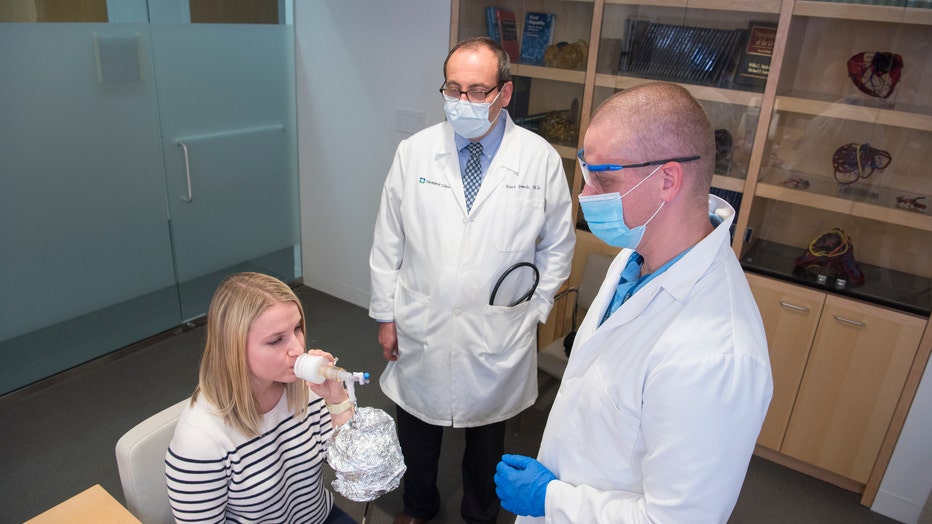Pandemic inspires new devices to detect COVID-19 in breath, blood flow

New devices to help detect COVID-19
Teams of researchers are working to develop innovative ways to detect and stop the spread of the coronavirus.
ATLANTA - If you have to go through the sometimes uncomfortable deep nasal swab test to screen for COVID-19, you have probably thought there has to be an easier way to determine if you have the virus.
Dr. Raed Dweik, Chairman of Respiratory Institute at the Cleveland Clinic, and his team are working on one, that measures compounds in your breath.
"You know you have a fingerprint," Dr. Dweik explains. "We also believe people have a 'breath print' that can tell a lot about what's going on in their lungs and elsewhere in their bodies."
Dweik says the Cleveland Clinic has been studying the breath as a disease detection tool for more than 20 years.
"We found that it can tell whether someone has heart failure, or kidney failure, or liver failure," he says.
But could your breath reveal a COVID-19 infection?
To find out Cleveland Clinic has teamed up with a private company, BreathTech Corporation, to try to design and test a machine that is similar to a breathalyzer for SARS-CoV-2, the virus that causes COVID-19.
"We hope to come up with something non-invasive, non-intrusive, can be widely used, and scaled up, so that it complements or replaces the current tests, which are not very comfortable," Dweik says.

1998025,Pacetti,10-28-20,CCC,Dr Raed Dweik,Dr David Grove,Covid Breath Testing Machine,Andrea Pacetti,Patient Consent
Dweik says the breath may reveal a couple of things about the virus in the body.
"One would be the effect of the virus itself," he says. "Maybe the virus releases certain compounds we can measure. The other one, which is equally important, are the compounds that are generated by our body's reaction to the virus, the inflammation, (of) us trying to protect ourselves."
In other words, Dweik says, the "breath print" of COVID might be a combination of both compounds produced by the virus and those produced by the body in response to the virus.
In Miami, Harrison Wittels' company Tiger Tech Solutions has created the COVID Plus Monitor.
The company was recently granted an emergency use authorization from the FDA for the device.
It is wrapped around a person's left arm, just above the elbow.
The device uses light sensors and a small computer processor to detect certain biomarkers unique to a SARS CoV-2 infection, Wittels says.
"The moment the virus enters your body, you start to undergo this inflammatory state," Wittels says. "The whole point is to measure what's happening subclinically in the body, to see how your body is fighting this very, very unique virus."
One abnormality the monitor may pick up on, he says, is hypercoagulation, a thickening of the blood in the blood vessels that can increase the risk of clotting and has been associated with COVID-19.
The FDA says the COVID Plus Monitor is not a diagnostic test.
So, it cannot be used to diagnose or rule out a SARS CoV-2 infection, the agency cautions.
But, Wittels says, it may help make crowded settings like schools or homeless shelters safer by identifying people who may be infected with the virus but have no symptoms.
You wear the device for 3 to 5 minutes before a green or red light is activated.
"If it's a green light, you're good to go," he says. "If it's a red light, that means you’re within that really high-risk population and it's move forward for additional testing."
WATCH: FOX 5 Atlanta live news coverage
_____
Sign up for FOX 5 email alerts
Download the FOX 5 Atlanta app for breaking news and weather alerts.

